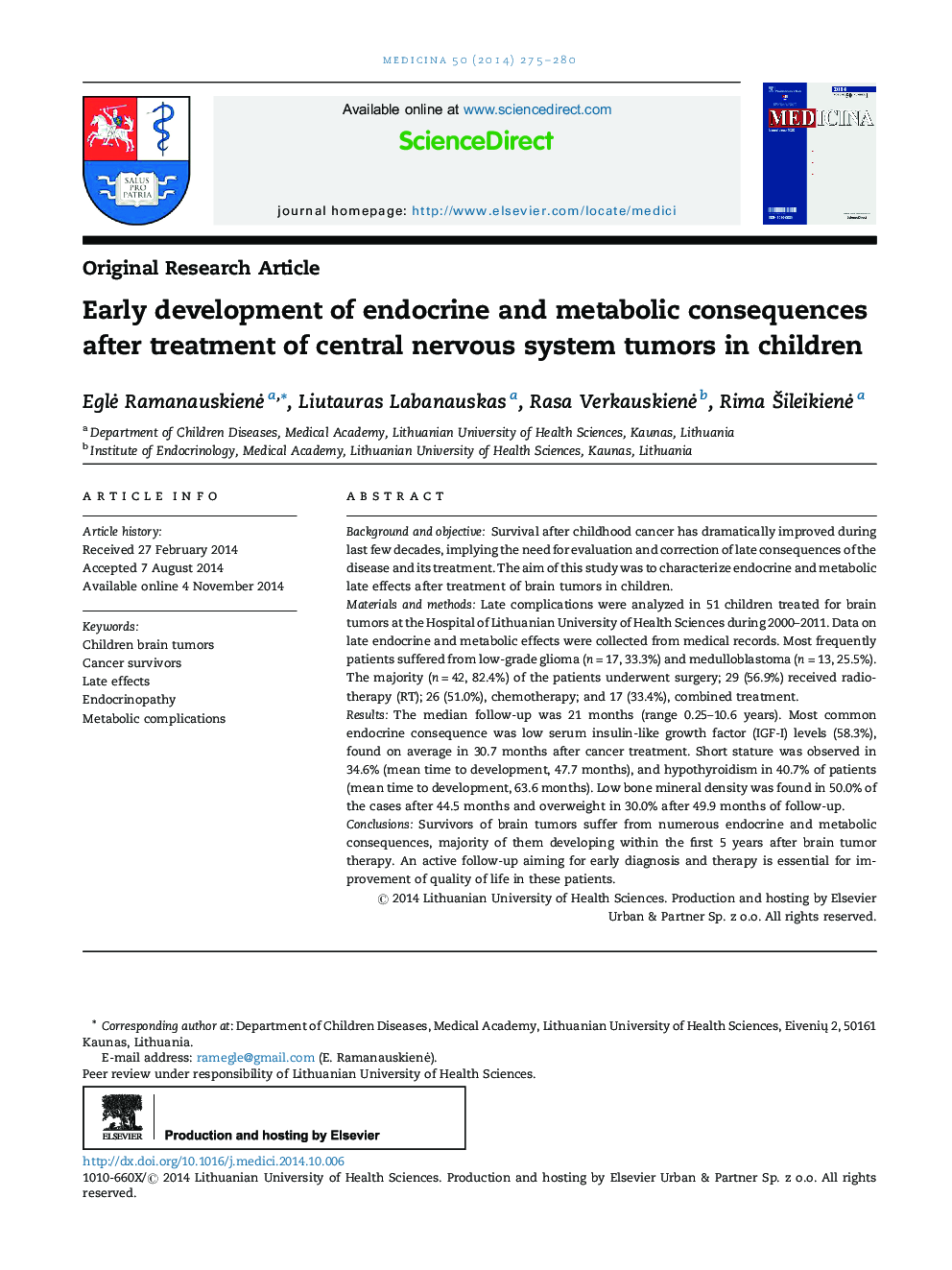| Article ID | Journal | Published Year | Pages | File Type |
|---|---|---|---|---|
| 2687173 | Medicina | 2014 | 6 Pages |
Background and objectiveSurvival after childhood cancer has dramatically improved during last few decades, implying the need for evaluation and correction of late consequences of the disease and its treatment. The aim of this study was to characterize endocrine and metabolic late effects after treatment of brain tumors in children.Materials and methodsLate complications were analyzed in 51 children treated for brain tumors at the Hospital of Lithuanian University of Health Sciences during 2000–2011. Data on late endocrine and metabolic effects were collected from medical records. Most frequently patients suffered from low-grade glioma (n = 17, 33.3%) and medulloblastoma (n = 13, 25.5%). The majority (n = 42, 82.4%) of the patients underwent surgery; 29 (56.9%) received radiotherapy (RT); 26 (51.0%), chemotherapy; and 17 (33.4%), combined treatment.ResultsThe median follow-up was 21 months (range 0.25–10.6 years). Most common endocrine consequence was low serum insulin-like growth factor (IGF-I) levels (58.3%), found on average in 30.7 months after cancer treatment. Short stature was observed in 34.6% (mean time to development, 47.7 months), and hypothyroidism in 40.7% of patients (mean time to development, 63.6 months). Low bone mineral density was found in 50.0% of the cases after 44.5 months and overweight in 30.0% after 49.9 months of follow-up.ConclusionsSurvivors of brain tumors suffer from numerous endocrine and metabolic consequences, majority of them developing within the first 5 years after brain tumor therapy. An active follow-up aiming for early diagnosis and therapy is essential for improvement of quality of life in these patients.
